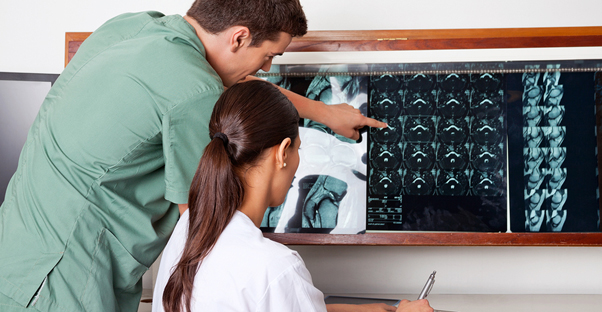
Once a person is determined to have a malignant tumor or the diagnosis of breast cancer, the healthcare team will determine staging to communicate how far the disease has progressed. Determining the stage helps to determine the best way to contain and eliminate the breast cancer. Staging is based on the size of the tumor within the breast, the number of lymph nodes affected, and whether or not the breast cancer has invaded other organs within the body. If breast cancer has spread or metastasized, evidence be may found in the bones, liver, lungs, or brain.
Stage 0
These lowest numbered stages represent the earliest detection of breast cancer development. At Stage 0 and 1, the cancer cells are confined to a very limited area. Stage 0 breast cancer, ductal carcinoma in situ (DCIS), is non-invasive cancer where abnormal cells have been found in the lining of the breast milk duct. In Stage 0 breast cancer, the atypical cells have not spread outside of the ducts or lobules into the surrounding breast tissue.
Stage 1
In Stage 1 breast cancer, cancer is evident, but it is contained to only the area where the first abnormal cells began to develop. The breast cancer has been detected in the early stages and can be very effectively treated. Stage 1 can be further classified as Stage 1A or Stage 1B as follows:
- Stage 1A: The tumor is smaller than the approximate size of a peanut and has not spread to the lymph nodes.
- Stage 1B: Lymph nodes have cancer evidence with small clusters of cells.
Stage 2
This stage means the breast cancer is growing, but it is still contained in the breast or growth has only extended to the nearby lymph nodes. This stage is also divided into groups: Stage 2A and Stage 2B. The difference is determined by the size of the tumor and whether the breast cancer has spread to the lymph nodes:
- Stage 2A: No actual tumor, or a very small one, is associated with the cancerous cells and less than four auxiliary lymph nodes have cancer cells present.
- Stage 2B: The tumor is between the 2 and 5 centimeters and has spread to less than four axillary lymph nodes. Or the tumor is larger with no spread to the lymph nodes.
Stage 3
Stage 3 cancer means the breast cancer has extended to beyond the immediate region of the tumor and may have invaded nearby lymph nodes and muscles, but has not spread to distant organs. Although this stage is considered to be advanced, there are a growing number of effective treatment options. This stage is divided into three groups: Stage 3A, Stage 3B, and Stage 3C. The difference is determined by the size of the tumor and whether the cancer has spread to the lymph nodes and surrounding tissue, similar to the previous stages.
- Stage 3A: No actual tumor or a tumor of any size is associated with cancerous cells in 4 or more nearby lymph nodes.
- Stage 3B: The tumor may be any size, and cancer has invaded the chest wall or breast skin with evidence of swelling, inflammation, or ulcers.
- Stage 3C: No actual tumor or a tumor of any size with cancer that may have invaded the chest wall or breast skin and it associated with cancerous cells in 10 or more lymph nodes under the arm.
Stage 4
Stage 4 breast cancer means that cancer has spread to other areas of the body, such as the brain, bones, lung, and liver. Although Stage 4 breast cancer is considered incurable, current advances in research and medical technology mean that more and more women are living longer by treating the disease as a chronic condition. With excellent care and support, as well as personal motivation, Stage 4 breast cancer may respond to a number of treatment options that can extend your life for several years.